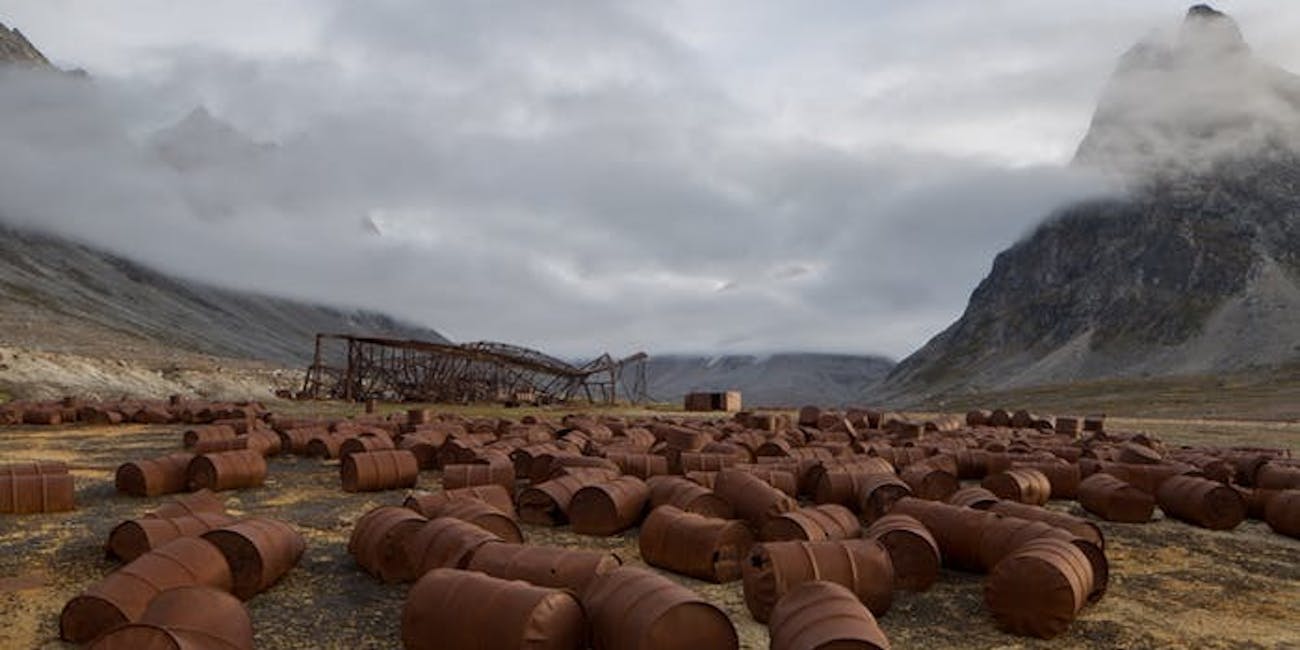The Forgotten Base: Exploring The U.S. Nuclear Facility Under Greenland's Ice

Table of Contents
Project Iceworm: The Cold War Origins of the Greenland Base
The 1950s and 60s witnessed the height of the Cold War, a period of intense geopolitical tension between the United States and the Soviet Union. Fear of a surprise nuclear attack fueled the development of ambitious military strategies, including Project Iceworm. This top-secret project aimed to construct a network of nuclear missile silos beneath the Greenland ice sheet, providing a strategically advantageous launch platform for retaliatory strikes. The seemingly impenetrable ice cover offered a degree of concealment unavailable elsewhere.
Key figures involved included high-ranking military officials and scientists who grappled with the unprecedented technological and logistical challenges. The sheer scale of the undertaking was staggering, requiring innovative solutions to overcome the extreme Arctic conditions.
- Technological Challenges: Building and maintaining a base under the ice presented a multitude of engineering problems, from the movement of the ice itself to the extreme cold. Conventional construction techniques were largely unsuitable.
- Strategic Advantages & Disadvantages: The location provided plausible deniability and protection from a first strike. However, the remoteness posed logistical nightmares for supply and maintenance.
- Initial Successes and Setbacks: The project initially showed promise, with some successful testing and construction. However, significant challenges soon became apparent, ultimately leading to its downfall.
The Scientific Challenges of Arctic Construction
Constructing a base under Greenland's ice was a feat of engineering unlike any other. The extreme Arctic environment presented a formidable adversary. Temperatures plummeted well below freezing, ice movement caused structural instability, and the permafrost posed unique challenges for foundation construction.
- Dealing with Extreme Cold, Ice Movement, and Permafrost: Specialized materials and innovative construction techniques were crucial. The ice itself presented a dynamic and unpredictable environment.
- Transportation of Materials and Personnel: Getting materials and personnel to the remote location was an immense logistical hurdle, requiring specialized transport vehicles and infrastructure.
- Power Generation and Waste Disposal: Providing reliable power and safely disposing of waste in such a harsh and isolated environment were significant ongoing problems.
The Abandonment of Project Iceworm and its Aftermath
Despite initial progress, Project Iceworm was eventually abandoned in 1966. Several factors contributed to this decision:
- Shifting Geopolitical Strategies: Advances in missile technology and the development of submarine-launched ballistic missiles rendered the Greenland base less strategically crucial.
- Unforeseen Challenges and Escalating Costs: The project's costs far exceeded initial projections, and the technological hurdles proved insurmountable.
- Environmental Concerns and Remediation Efforts: The environmental impact of the project, particularly the potential for contamination, became a growing concern. Limited remediation efforts were undertaken before abandonment.
The Legacy of the Forgotten Base: Unanswered Questions and Future Research
Project Iceworm's legacy extends beyond its short lifespan. It pushed the boundaries of engineering and military strategy, shaping future approaches to Arctic operations and research. However, many questions remain unanswered:
- Declassified Documents and Ongoing Investigations: The release of declassified documents continues to shed light on various aspects of the project, though many details remain obscured.
- Potential for Uncovering New Information Through Modern Technology: Advanced technologies could potentially reveal more about the base's construction and its current state.
- The Base's Relevance to Current Geopolitical Discussions Regarding the Arctic: With renewed interest in Arctic resources and strategic positioning, the project's legacy takes on new significance.
Conclusion: Delving Deeper into the Mystery of the U.S. Nuclear Facility Under Greenland's Ice
The U.S. nuclear facility under Greenland's ice, a product of Cold War anxieties, stands as a testament to human ambition and the challenges of operating in extreme environments. Project Iceworm's story highlights the complexities of military strategy, the limitations of technology, and the enduring impact of human endeavors on the environment. While much remains unknown, ongoing research and the release of declassified information continuously deepen our understanding of this fascinating and forgotten chapter of history. Learn more about this fascinating piece of history and delve deeper into the mysteries surrounding the U.S. nuclear facility under Greenland's ice. Continue your exploration today!

Featured Posts
-
 Tonights Nhl Game Maple Leafs Vs Rangers Prediction And Betting Odds
May 15, 2025
Tonights Nhl Game Maple Leafs Vs Rangers Prediction And Betting Odds
May 15, 2025 -
 Analyzing The Knicks Remaining Games Brunson Injury Update And Koleks Impact
May 15, 2025
Analyzing The Knicks Remaining Games Brunson Injury Update And Koleks Impact
May 15, 2025 -
 Padres Daily Fernando Tatis Jr S Struggles And The Path To Victory
May 15, 2025
Padres Daily Fernando Tatis Jr S Struggles And The Path To Victory
May 15, 2025 -
 Padres Vs Pirates Mlb Game Prediction Picks And Odds
May 15, 2025
Padres Vs Pirates Mlb Game Prediction Picks And Odds
May 15, 2025 -
 Best Bets Round 2 Nba And Nhl Playoffs
May 15, 2025
Best Bets Round 2 Nba And Nhl Playoffs
May 15, 2025
